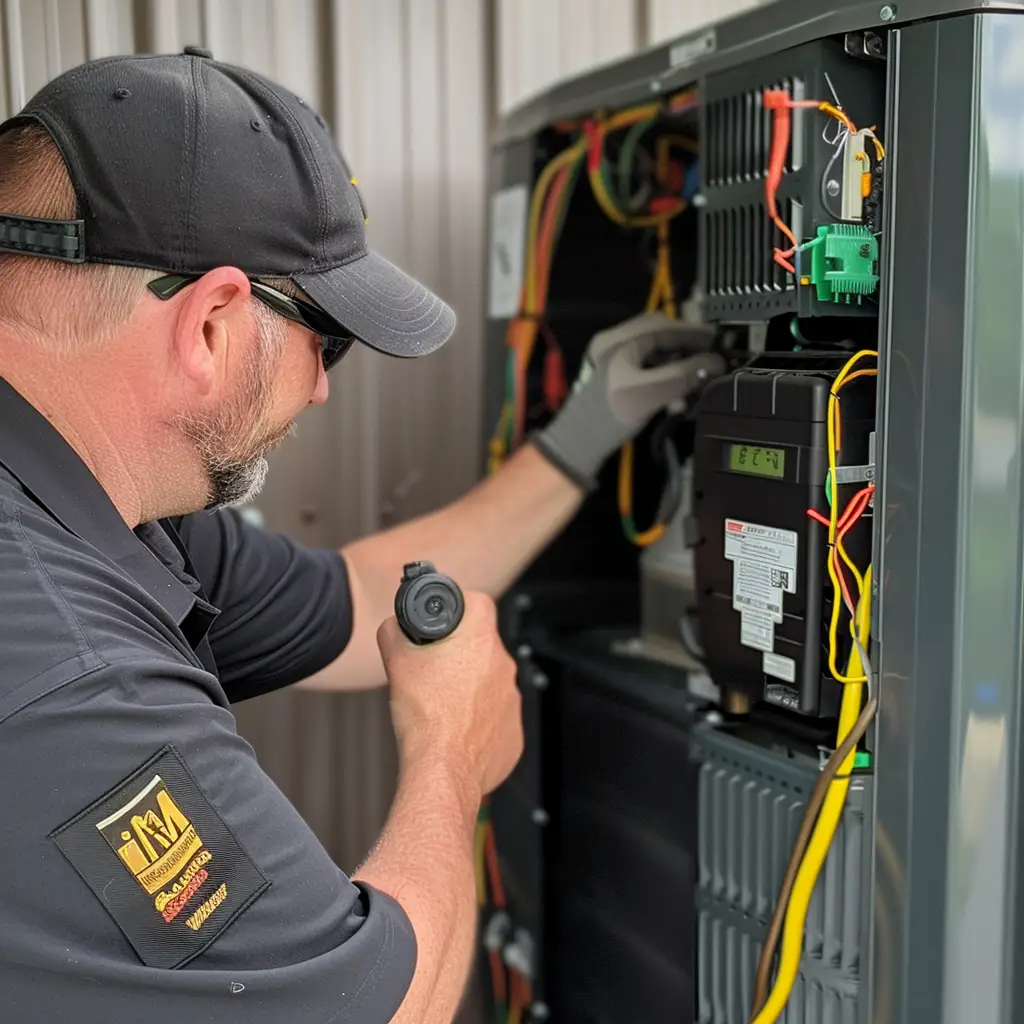Experiencing issues with your furnace and believe your heat exchanger may be the issue?
The heat exchanger in your furnace is an important component that helps to safely transfer heat from the burning fuel to your home. If the heat exchanger is malfunctioning, it can pose a serious safety risk and lead to costly repairs.
Here are six signs that your furnace heat exchanger may be failing:
How and Why Heat Exchangers Fail: A Closer Look
A dirty, clogged air filter is a common contributor to heat exchanger failure. Restricted airflow and overheating caused by a clogged air filter can lead to stress cracks in the heat exchanger.
When a heat exchanger fails, it can allow carbon monoxide and other harmful gases to escape into your home, posing a serious safety hazard. It can also lead to decreased efficiency and higher energy bills, as well as costly repairs.
To prevent heat exchanger failure, it’s important to regularly maintain your HVAC system and address any issues that arise. This can include cleaning the furnace, inspecting and replacing the heat exchanger as needed, and ensuring that the system is operating correctly.
6 Signs Your Furnace Heat Exchanger is Failing
- Age of the Furnace: the heat exchanger in a furnace has a limited lifespan and will eventually need to be replaced. If your furnace is more than 20 years old, it’s more likely that the heat exchanger is nearing the end of its life and may need to be replaced.
- Cracks or Holes in the Heat Exchanger: If the heat exchanger is damaged, it can allow carbon monoxide and other harmful gases to escape into your home. This can be a serious safety hazard, so it’s important to have any cracks or holes in the heat exchanger repaired or replaced immediately.
- Yellow Flame: a healthy furnace should produce a blue flame. If the flame is yellow, it could be a sign that the heat exchanger is failing.
- Soot or Rust: If you notice soot or rust around the furnace, it could be a sign that the heat exchanger is damaged.
- Decreased Efficiency: if your furnace is not operating as efficiently as it used to, it could be a sign that the heat exchanger is failing. This can result in higher energy bills and may indicate the need for repair or replacement.
- Strange Smells: If you notice strange smells coming from your furnace, it could be a sign that the heat exchanger is failing. These smells may include a burning smell or the smell of natural gas.
Cost of Heat Exchanger failure:
The cost of replacing a heat exchanger will depend on a variety of factors, including the size and type of your HVAC system, the type of fuel it uses, and the specific issue with the heat exchanger. In general, heat exchanger replacement can range from a few hundred dollars to several thousand dollars.
Heat exchanger failure can also result in higher energy bills if the issue is not addressed promptly. An inefficient HVAC system will use more energy to heat or cool your home, leading to higher bills. By addressing any issues with the heat exchanger and ensuring that your system is running efficiently, you can help to reduce your energy costs.
Conclusion
Overall, the cost of heat exchanger failure can vary significantly and it’s important to carefully consider the costs and potential long-term benefits when deciding whether to repair or replace your HVAC system.
If you notice any of these signs, it’s important to have your furnace inspected by a licensed HVAC Contractor in Toronto. Urgent diagnosis of the problem and determine and understanding if the heat exchanger needs to be repaired or replaced is important. Ignoring these warning signs can lead to more serious problems and costly repairs, so it’s important to address them as soon as possible. By regularly maintaining your furnace and addressing any issues that arise, you can help to ensure that your heating system is running safely and efficiently.
For a video walkthrough on failing heat exchanger signs, check out this video by Fox Family Heating and Air Conditioning





